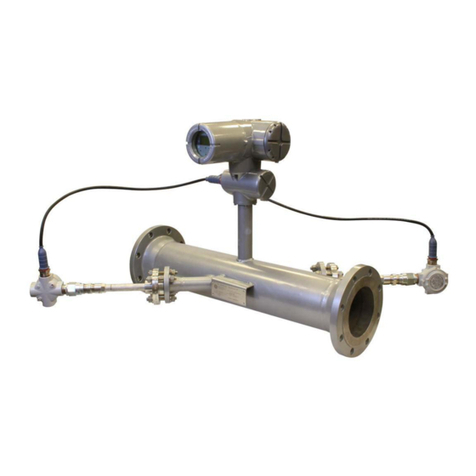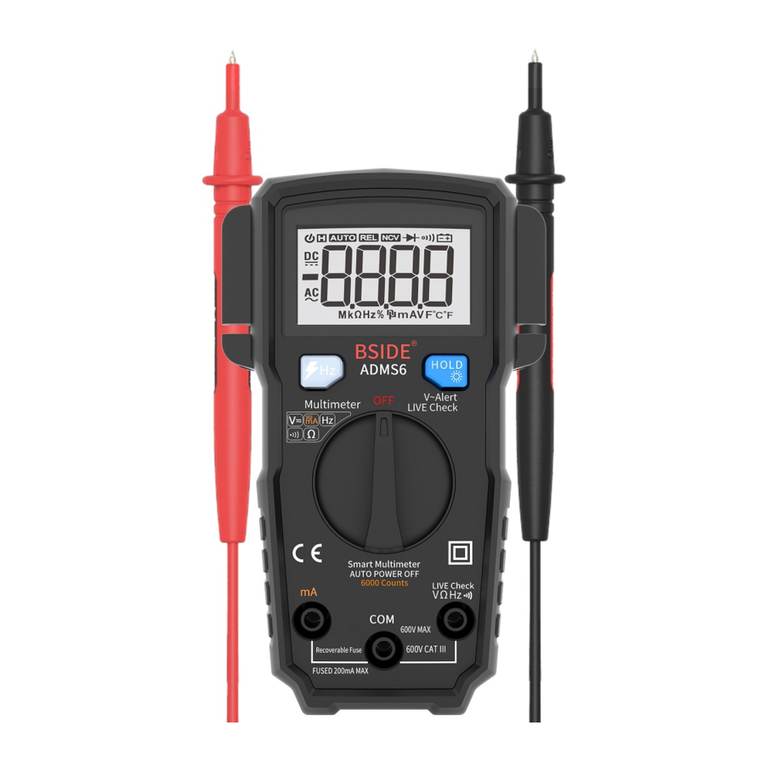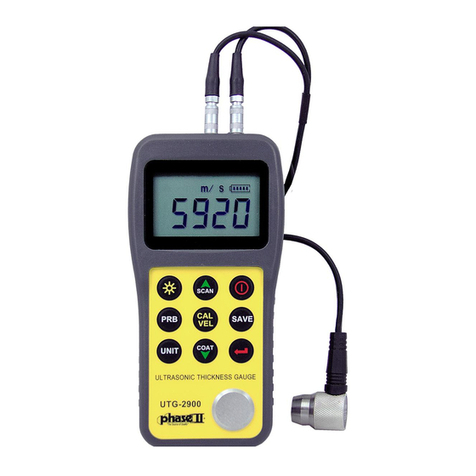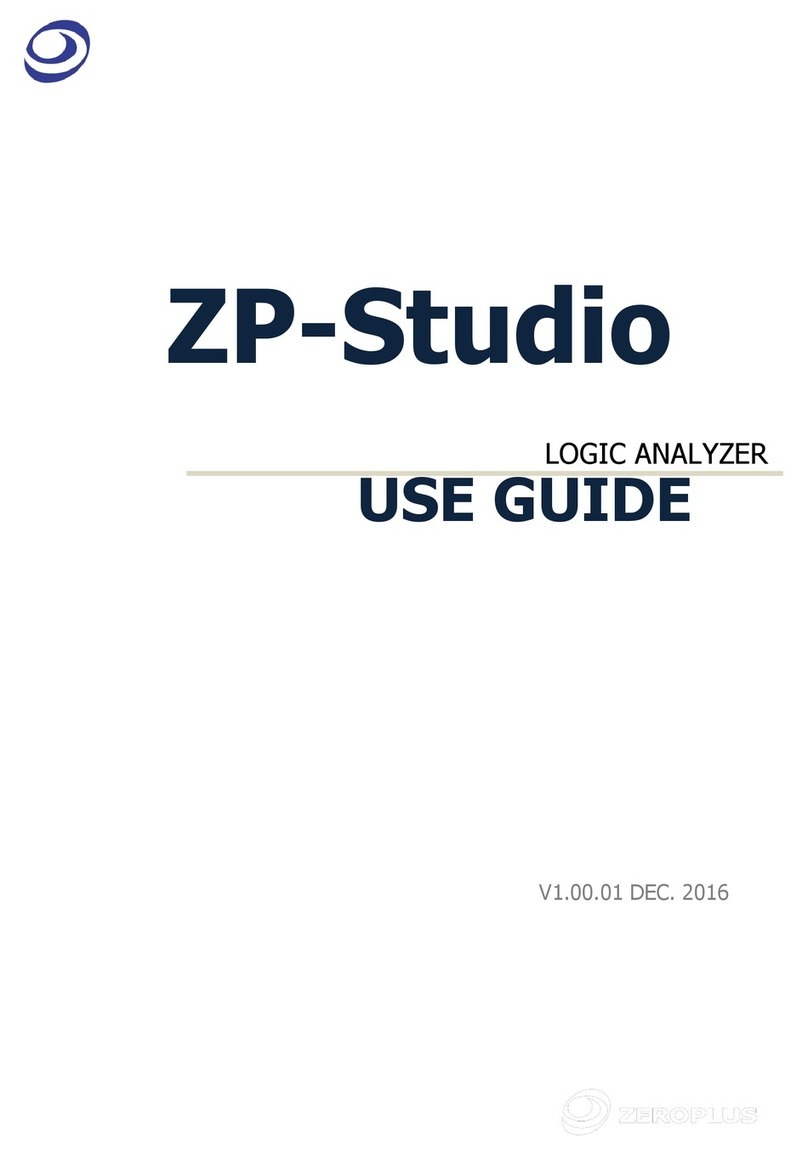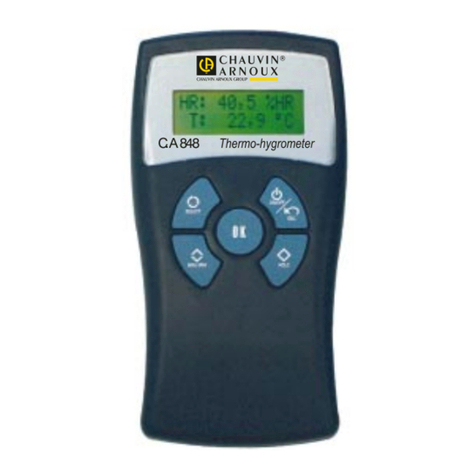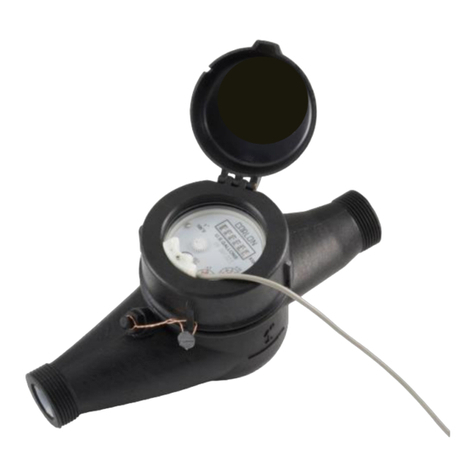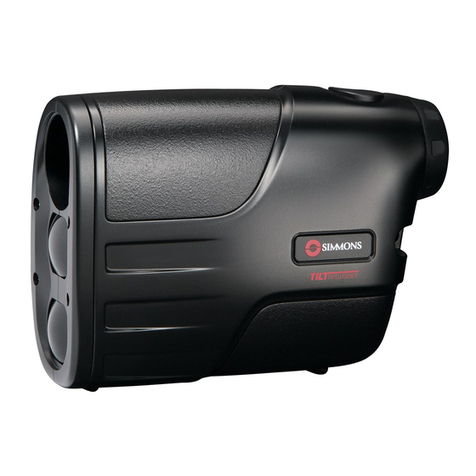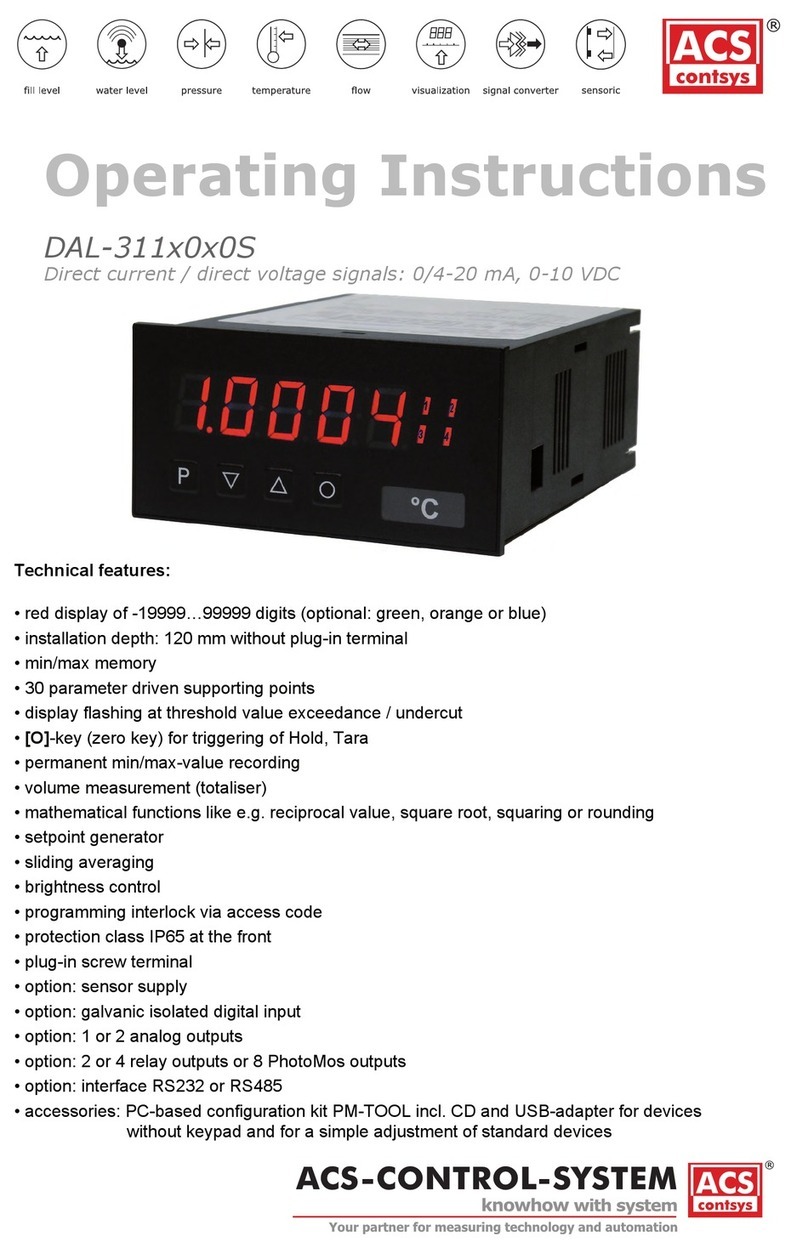enertexbayern Enertex KNX Smartmeter 85A (RT) Quick guide

Manual and Configuration
KNX Smartmeter 85A (RT)
Advice
The contents of this document may not be wholly or partially, reproduced, transferred, distributed or stored in any form
without prior written approval by Enertex® Bayern GmbH
Enertex® is a registered trademark of Enertex® Bayern GmbH Other product- and company names mentioned herein
can be names of trademark or registered trademarks of their respective owners
This manual may be changed without notifications or notice and makes no claim to completeness or accuracy
Enertex® Bayern GmbH – Ebermannstädter Straße 8 - 91301 Forchheim - Deutschland - mail@enertex de

Handbuch-KnxSmartmeter-85A-en-3 odt, 2018-10-04 Seite 2 von 69
Contents
Notes.............................................................................................................................................................. 3
Function........................................................................................................................................................ 4
Technica specifications..............................................................................................................................4
Assemb y....................................................................................................................................................... 7
Connection diagram................................................................................................................................. 7
Assembly of the current sensors..............................................................................................................8
Commissioning............................................................................................................................................ 9
ETS-App ication.......................................................................................................................................... 10
Specification........................................................................................................................................... 10
Data base file......................................................................................................................................... 10
Examples of settings.............................................................................................................................. 10
Example 1:
Visualization of
energy consumption 10
Example 2:
Bidirectional Counter for Photovoltaics 16
easurement quantities......................................................................................................................... 23
General Function Concepts................................................................................................................... 25
Cyclical transmitting 25
Transmit at Change 25
Bidirectional Counter 26
Intermediate Counter 27
Tariff Costs Counter 27
Preset of a Counter 28
Message of limit values 28
Recording on the SD card 29
Adjusting the real-time
clock without bus access 31
Parameter............................................................................................................................................... 31
General 31
Measurement 33
Energy counter / Tariff cost counter 41
Tariff 48
Group Objects........................................................................................................................................ 51
Firmware update.........................................................................................................................................69
Revision history.........................................................................................................................................70
Enertex® Bayern GmbH – Ebermannstädter Straße 8 - 91301 Forchheim - Deutschland - mail@enertex de

Handbuch-KnxSmartmeter-85A-en-3 odt, 2018-10-04 Seite 3 von 69
Notes
•Installation and assembly of electrical equipment must be carried out by qualified
electricians
•When connecting KNX/EIB interfaces specialist skills are required
•Ignoring the instructions can damage the device, as well a fire or other hazards can
arise
•These instructions are part of the product and must be left with the end user
•The manufacturer is not liable for costs or damages incurred by the user or third parties
through the use of the device, misuse or malfunction of the connection, malfunction of
the device or user equipment
•Opening the housing, other unauthorized alterations and or modifications to the device
will invalidate the warranty!
•Only the current sensors, which are included, may be connected to the current sensor
inputs
•The manufacturer is not liable for improper use
Enertex® Bayern GmbH – Ebermannstädter Straße 8 - 91301 Forchheim - Deutschland - mail@enertex de

Handbuch-KnxSmartmeter-85A-en-3 odt, 2018-10-04 Seite 4 von 69
Function
The KNX Smartmeter is a bidirectional counter for measuring the active and reactive power or
energy, as well for power quality monitoring The measurement will be done in three-phase
system or in three separate single-phase systems with the accuracy of class 1 (1%)
In the accuracy class 1 according to EN 62053-31 only accuracy requirements for the
measurement range between 2% and 100% of rated current are determined For smaller
currents no requirements are defined, as these can not be accurately detected with conventional
current transformers In contrast, the Enertex KNX Smartmeter uses high precision (Rogowski-)
current sensors which are calibrated to the device in factory Thus, very small currents to
0 002% (2mA) of rated current are accurately measurable In addition, the current is measured
with very little loss (< 2mW loss) The provided current sensors are suitable for through-hole
mounting and can be installed directly at the main supply point of the grid
The Smartmeter is powered exclusively via the bus Therefore, the device can even be operated
if there is no voltage at the voltage inputs or the voltage has been separated
The measurement range of the active power extends from 0 5W to 19 550W or 58 650W (three-
phase) Energy values or measurement values for monitoring the power quality can be recorded
for analysis on a SD card
All measured values (current, voltage, active power, reactive power, active energy, reactive
energy, power factor, THD-U, THD-I, power harmonics, unbalanced load, zero current, power
frequency) are shown on the KNX bus
Besides specialized functions for performance-based load control, optimization of the inherent
energy demand with PV facilities, calculating the usage or feeding charge with tariff switching
the ETS application also provides various monitoring functions In case of exceed of limits these
functions report events as power outages, high voltage spikes, high power distortion, high
reactive energy, highly non-uniform loading of the three phases (unbalanced load) or high
neutral loading on the bus To assess the power quality harmonics up to the 50th harmonic of
current and voltage are measured The numerous monitoring features enable fast accurate
analysis of network-related failures, malfunctions and damages of electrical equipment
The device variant with the RT option can also be operated without a KNX bus To do this, a
24VDC power supply must be connected to the KNX terminal In this mode, all measurement
data of the recording mode "All measured values without mains harmonics" are recorded on the
SD card every minute as described in the section "Recording on the SD card" The recording
times for the measured values are selected in this mode according to an internal battery-
buffered clock, which is factory set to the local time of Berlin (UTC / GMT +1 hour) and deviates
from the real time by a maximum of one minute per year If necessary, the clock can be adjusted
using the SD card The adjustment of the clock without KNX bus is described in section
"Adjusting the real-time clock without bus access"
Note: The security against tampering of the current counter, required for billing purposes, can
not be guaranteed with this Smartmeter Therefore this KNX device is not a current counter for
billing purposes in terms of the standard (for example IEC 62052-11)
Technica specifications
KNX Voltage:
Current consumption:
Typical power consumption:
DC 21 32 V SELV
< 18mA
0 28W
Enertex® Bayern GmbH – Ebermannstädter Straße 8 - 91301 Forchheim - Deutschland - mail@enertex de

Handbuch-KnxSmartmeter-85A-en-3 odt, 2018-10-04 Seite 5 von 69
Connections Voltage measurement input:
Cross section:
Input voltage:
Power frequency:
Current sensor input:
Cross section:
Ground terminal:
Cross section:
Max cross section through
current sensor:
EIB / KNX Connection:
4 pol screw terminal
0,33 4 mm² / AWG 22 12
max 460Vrms
50Hz
3 x 3 pol screw terminal
0 2 4 mm² / AWG 24 12
3 pol screw terminal for functional earth,
internal bridged
0 2 4 mm² / AWG 24 12
25 mm² / AWG3
Connector Type 5 1
Insta ation Scope of application:
Protection type:
Ambient temperature:
Protection class:
Over voltage category
for voltage input:
For use indoors
IP20
-5 °C 45°C
II
400Vrms / CAT IV
Housing Type:
Width:
Dimensions:
Flammability:
DIN rail housing for 35 mm rail
4 Units
70,0 x 89,6 x 62,9 mm (L x W x H)
UL94-V0
Genera Certification:
Applicable standards for
CE-marking:
EIB/KNX certificated
Tested for safety in accordance with DIN EN
61010-1
Tested for EMC compliance in accordance with
DIN EN 50491-5
Meets requirements for housholds according to
DIN EN 50491-5-2 and for industrial according
to DIN EN 50491-5-3
Supp ied
accessories
Current sensors:
SD-card
3 x current sensor (Rogowski-converter) with
each 1,5m Measurement line and centering clip
Micro SD card with adapter
Measurement
va ues
Current, Voltage, Active power, Reactive power, Active energy, Reactive
energy, Power factor, THD-U, THD-I, Unbalanced load, Zero current, Power
frequency, Power harmonics up to the 50th harmonics
Accuracy
c ass
Active energy according to
DIN EN 62053-21:
Starting current:
Max current (Imax):
1 (1%)
2mA (rms value)
85A (rms value)
Enertex® Bayern GmbH – Ebermannstädter Straße 8 - 91301 Forchheim - Deutschland - mail@enertex de

Handbuch-KnxSmartmeter-85A-en-3 odt, 2018-10-04 Seite 6 von 69
Measurement-
accuracy
Active power:
Measurement ranges
0,5W 2W:
2W 20W:
20W 20kW:
Current:
Measurement ranges
1mA 10mA:
10mA 100mA:
100mA 85A:
Voltage:
Measurement range
30V 460V:
Frequency:
Measurement range
40Hz 60Hz:
THD-I, Harmonics I:
Measurement ranges
0% 10%:
10% 100%:
THD-U, Harmonics U:
Measurement ranges
0% 10%:
10% 100%:
Typical measurement deviations per channel
< 10% or 0 1W
< 5%
< 1%
Typical measurement deviations
< 5% or 0 5mA
< 2%
< 1%
Typical measurement deviation
< 0 5%
Typical measurement deviation
< 0 1%
Typical measurement deviations
(at 5Arms rating current)
< 0 2% absolute
< 1% absolute
Typical measurement deviations
(at230Vrms rating voltage)
< 0 2% absolute
< 1% absolute
Enertex® Bayern GmbH – Ebermannstädter Straße 8 - 91301 Forchheim - Deutschland - mail@enertex de

Handbuch-KnxSmartmeter-85A-en-3 odt, 2018-10-04 Seite 7 von 69
Assemb y
Connection diagram
KNX
-+
N V1 V2 V3
Voltage Inputs
Current Inputs
I1 I2 I3
Figure 1: Terminal connection diagram
ATTENTION DANGER!
E ectrica shock on contact with ive parts. E ectrica shock can resu t in death.
Disconnect the mains before working on device and cover up ive parts in the
vicinity!
The neutral conductor and the measurement inputs for the 3 voltage measurement channels V1,
V2 and V3 are connected to the overlying screw terminal When measuring a three-phase
system the phases L1, L2 and L3 have to be connected to V1, V2 and V3 If the Smartmeter is
not in three-phase operation then the phase voltage of the corresponding current channel has to
be connected to voltage measurement channel V1, V2 and V3 For example, if three powers are
to measure at one single phase, then this phase has to be connected to all three channels V1,
V2 and V3 The supply for the voltage inputs may be made from any location downstream the
main fuse, since the voltage inputs are designed for over voltage category IV Insulation and
electro-magnetic imunity is designed for overvoltage category 4 So, the voltage inputs need not
to be additionally fused
The EIB/KNX bus is connected on the upper left, grey / red terminal The Smartmeter is powered
solely by the KNX bus
Optionally a ground can be connected to one of the three ground terminals By a connected
grounding the measurement accuracy for very small currents and powers is increased Thus,
when measuring the current, the measurement deviation is reduced by about 0 3mA or when
measuring the power the deviation is reduced by about 70mW By connecting the grounding the
KNX bus is connected via a capacitance of 15nF to ground
Enertex® Bayern GmbH – Ebermannstädter Straße 8 - 91301 Forchheim - Deutschland - mail@enertex de

Handbuch-KnxSmartmeter-85A-en-3 odt, 2018-10-04 Seite 8 von 69
The current sensors have to be connected to the lower terminals of the Smartmeter with the
following assignment:
•I+ : brown
•I- : white
•Shield : black (drain wire)
Assemb y of the current sensors
The current-carrying conductor, to be measured, must be passed through the current sensor If
possible, the line should be passed vertically through the current sensor Thus, the highest
precision is achieved in the current measurement In order to fix the current sensor, it could be
fixed with a cable strap at the conductor It is recommended for safety reasons to lead the
conductor with insulation through the current sensor
10mm
46mm
397mm
1
Figure 2: Dimensions of the 85A current sensor in mm
Safety note: In the vicinity of label 1 of Figure 2 the current sensors cable is only single
insulated At this point a savety distance of at least 5mm has to be adhered to all non insulated
live conductors Similarly a safety distance of at least 10mm from the screw terminals has to be
adhered to all non insulated live conductors However, the sheath of the line for the current
sensors has a reinforced insulation Hereby no safety distances to the vicinity are required
Since the current sensors are calibrated for each current channel it must be ensured that the
accompanying current sensors are connected to the corresponding channel For this purpose a
corresponding marking of the channel is mounted on each current sensor In addition, the
current sensors should be connected only to that Smartmeter, with which they were delivered
To avoid any confusion, the serial number of the Smartmeter is attached to the line of a current
sensor The serial number can also be recovered lateral of each Smartmeter
A power count arrow (for positive power count direction) is attached by
P+
on the current
sensors A power flow in this direction corresponds to a positive power value Usually, the
current sensors are mounted so that the power count arrow shows from the energy source to
the energy consumers, so that an energy consumption has a positive impact for the balance
energy counter
The lines to the current sensors should be laid according to EMC requirements This is
especially important when a high accuracy for currents below 100mA (equivalent to 25W) is
required Therefore the following recommendations are made:
•The line should be laid in a minimum distance of 2cm to power lines
Enertex® Bayern GmbH – Ebermannstädter Straße 8 - 91301 Forchheim - Deutschland - mail@enertex de

Handbuch-KnxSmartmeter-85A-en-3 odt, 2018-10-04 Seite 9 von 69
•The line should be laid at a distance of at least 10cm to high-frequency sources of
interference These include for example:
◦Inverter, converter
◦WLAN Router
◦Counter with GSM interface
◦Equipment of a radio - bus, as Enocean, KNX-RF
For the highest precision the lines to the current sensors can also be cut to the minimum
required length When shortening it is to make sure that also the drain wire is connected to the
shield terminal In addition, care must be taken that after shortening, the cable shield is again
insulated by a shrinking tube, as it was the case in the original condition As an alternative to this
insulation the electrical safety can also be ensured by maintaining a safety distance between the
non - insulated part of the shield and all the live conductors by at least 10mm
If necessary, it is also possible to extend the lines for the current sensors up to 10m However,
an increasing cable length is accompanied by a higher disturbance in the measurement signal
Thus, the measurement accuracy for small currents is reduced It is therefore recommended not
to extend the line, if currents below 500mA (about 100W) shall be accurately measured To
affect the measurement accuracy as little as possible in a case of an extension the following is
recommended:
◦Only use shielded lines with at least 0 5mm² The shield of the extension must be
connected to the shield wire (drain wire) of the existing measurement line
◦The extension should be soldered to the existing measurement line
◦The shield of the extension or the extension drain wire must be connected to the
Smartmeter at the shield terminal
For safety reasons the extension has to be attached so that from the shield and the wires of the
extension to all live parts in the vicinity of the extension a double or reinforced insulation is
maintained This can be achieved by insulation and/or the observance of minimum distances
Commissioning
After connecting all the cables according to the connection diagram 1 the device is ready for
operation Once the KNX bus is connected, the “POWER” LED lights up permanently green after
a short start-up (about 3 seconds) From that time the device performs measurements
continuously
By a short light up the channel LEDs E1, E2 and E3 signalize measuring an energy amount of
1/1000 kWh in the particular channel When the Smartmeter record data onto the SD card, the
POWER LED lights up red during the writing process To prevent data loss on the SD card the
SD card may not be drawn during this writing phase SD card is inserted in a way, that the
contacts of the SD card are on the top
Enertex® Bayern GmbH – Ebermannstädter Straße 8 - 91301 Forchheim - Deutschland - mail@enertex de

Handbuch-KnxSmartmeter-85A-en-3 odt, 2018-10-04 Seite 10 von 69
ETS-App ication
Specification
ETS: from Version 3 0d, Patch A
Data base fi e
In http://www enertex de see the current ETS database file and the current product description
Examp es of settings
Below examples are presented, which show how the KNX Smartmeter can be used To this end
appropriate adjustments in the ETS will be shown The adjustments can be adopted directly
Examp e 1:
Visua ization of
energy consumption
In the first example the progress of energy consumption and the progress of the energy costs of
a residential house shall be recorded and shown on the bus The consumption values
transmitted on the bus can be visualized for example on the web server of Enertex EibPC over
the last 30 hours
Figure 3: Example of the visualization of energy consumption
Furthermore it is shown in this example, how the progress of the three-phase active power can
be displayed completely on the bus and the Smartmeter is configured such, that it also records
all measurement values on the SD card every 15 minutes
In this example the following topics are treated: Installation of the Smartmeter, tariff counter,
intermediate counter, preempting a count, SD card, transmitting in case of change and time
In this example the installation of the Smartmeter is a three-phase at the house connection
Generally the current sensors are installed directly downstream the current counter of the
energy supplier Similarly the voltage may be tapped directly downstream the current counter
Enertex® Bayern GmbH – Ebermannstädter Straße 8 - 91301 Forchheim - Deutschland - mail@enertex de

Handbuch-KnxSmartmeter-85A-en-3 odt, 2018-10-04 Seite 11 von 69
KNX-BUSVisualization
Current
Voltage
Mains
power supply
Consumer
Smartmeter
Current Counter
(from Supplier)
Figure 4: Connection of Smartmeter to record the total energy consumption of a residential
building
When connecting make sure that the current sensors are oriented such, that the applied power
arrows show from the public supply network in direction of consumers within the home Next,
make sure that voltage L1 is connected to V1, voltage L2 to V2 and voltage L3 to V3 Likewise,
the current sensor at conductor L1 has to be connected to I1, the current sensor at conductor L2
to I2 and the current sensor at L3 to I3
Attention: If a channel is reversed, the measured values for the active power and active
energies are distorted strongly
After connecting the lines according to the connection plan the device is ready for operation
Once the KNX-bus is connected, the “POWER” LED lights up permanently after a short start-up
procedure (about 3 seconds) From that time the device performs measurements permanently If
not already done the SD card for recording the measurement data has to be inserted
Below is shown, which relevant parameter related to this example has to be set in the ETS
In the tab “General” the parameter “Request time and date after bus voltage recovery” should be
set Otherwise the default values can be adopted By setting the parameter the Smartmeter
requests once after each restart of the application the current time and date from the bus This
data must be provided from an other device in via a group address If no device exists on the
bus, which provides a time then this example can not be applied The time is needed since the
Smartmeter transmit the measurement values always synchronized with the day time on the
bus, e g on the minute or hour The time is also needed for the timely recording of the
measurement data on the SD card
Therefore the tab “General” has to be parameterized as follows:
Enertex® Bayern GmbH – Ebermannstädter Straße 8 - 91301 Forchheim - Deutschland - mail@enertex de

Handbuch-KnxSmartmeter-85A-en-3 odt, 2018-10-04 Seite 12 von 69
Figure 5: Settings „General“ Example 1
The settings in the tab “Measurement” can be seen in Figure 6 It is advisable that in the
parameter “Reference current for limit values (x5A)” the security value is entered with which the
lines at the measurement point of the Smartmeter are protected In this example the reference
value is therefore adjusted to 35A corresponding to the protection fuse of the house connection
Therefore a parameter with the value 7 is entered in “Reference current for limit values (x5A)”
This setting results in a viable range of values for the subsequent indication of current and power
limits
Since only the measurement of three-phase values is relevant in this example, only these are
released in the settings Otherwise the default values can be adopted With the default settings
for the SD card recording, all measured values except the harmonics are recorded on the SD
card With a parameterized recording interval of “15min” each 15 minutes a record of all
measurements (currents, voltages, powers, energy counter, THDs, frequency, power factors,
current and voltage peaks) on the SD card is done The measurements are written in CSV
format to a file At the beginning of each new day a new recording file is generated Thus, the
data on the SD-card are ordered by day to a certain extent The csv-files can directly be opened
and processed by a spreadsheet program such as Excel, Openoffice Calc or Gnumeric
Figure 6: Settings „ easurement“ Example 1
In the next tab “Measurement three-phase” can be parameterized, which three-phase values are
to be transmitted on the bus
Enertex® Bayern GmbH – Ebermannstädter Straße 8 - 91301 Forchheim - Deutschland - mail@enertex de

Handbuch-KnxSmartmeter-85A-en-3 odt, 2018-10-04 Seite 13 von 69
Figure 7: Settings „ easurement three-phase“ Example 1
If, as in this example, the three-phase power shall be displayed on the bus seamlessly, the panel
“Transmit power and current measurements at change” has to be enabled Then further buttons
are opened, with which this function can be specified In the panel “Transmit measured values at
change” a percentage rate of 5% is indicated Thus, a new measured value is transmitted, if the
measured value has been changed by more than 5% with respect to the value last transmitted
on the bus With this setting the measurement on the bus can be effectively tracked without
which the bus is flooded with unnecessary messages If the number of messages is still too high
with this settings, then the number of transmitted messages can be reduced by increasing the
percentage value However, this goes hand in hand that the measured values can be tracked by
the bus with less accuracy Here a appropriate compromise depending on the fluctuation of the
consumption loads should be found between the deviation of the indication from the current
measurement and the operational demands of the bus Finally it should be configured, which
measurements are to transmit in cases of changes Since only the active power is of interest,
only that button is activated
In the following tab “Energy counter/ Tariff cost counter” from Figure 8 the used counter can be
released Since in this example only the three-phase consumption and its costs are to be
visualized, only the energy counter “Energy counter three-phase” and the cost counter “Tariff
cost counter 1” is released Furthermore two other so-called intermediate counter are required in
this example to transmit quarter-hour-consumptions and to transmit daily consumption costs
(=daily cost of electricity) These counters are released as well:
Enertex® Bayern GmbH – Ebermannstädter Straße 8 - 91301 Forchheim - Deutschland - mail@enertex de

Handbuch-KnxSmartmeter-85A-en-3 odt, 2018-10-04 Seite 14 von 69
Figure 8: Settings „Energy counter/Tariff costs counter“ Example 1
In the following two tabs “Energy counter - three-phase” and “Tariff costs counter - three-phase”
no adjustments have to be done Here the default values are taken
Now the energy counter in the tab “Intermediate counter 1” is configured to count the quarter-
hour consumption For this the “Input counter value of intermediate counter” has to be set to
“Active energy counter (consumption) - three-phase” The counting interval is set to “15min”
Furthermore the setting “Transmit counter value before resetting” is enabled:
Figure 9: Settings „Intermediate counter 1“ Example 1
With this configuration the intermediate counter sums up the three-phase energy consumption
each about 15 minutes and transmits this amount on the bus at the end of the interval After that
the intermediate counter resets and adds the energy consumption again Thereby the time
intervals are synchronized with the day time, so that the time intervals only start and end at
times XX:00 (=every hour), XX:15 and XX:45 Thus, these counters can also measure
synchronous to other current counters Finally the 3-phase energy consumption of the last 15
minutes is transmitted cyclically after each quarter of an hour by this parametrization Thereby
Enertex® Bayern GmbH – Ebermannstädter Straße 8 - 91301 Forchheim - Deutschland - mail@enertex de

Handbuch-KnxSmartmeter-85A-en-3 odt, 2018-10-04 Seite 15 von 69
the energy consumption of intermediate counter 1 is transmitted by the group object “Energy
counter-previous value” on the bus The energy consumption is transmitted in the unit Wh
Similarly, the intermediate counter 2 is configured to transmit each daily energy costs at the end
of a day on the bus For this purpose “Tariff cost counter (consumption) - tariff 1” is used as
input value in intermediate counter 2 The counting interval is set to “24h” Furthermore the
adjustment “Transmit counter value before resetting” is enabled again:
Figure 10: Settings „Intermediate counter 2“ Example 1
The energy costs which have been summed up over the day are then transmitted on the bus at
the end of a day via the group object “Costs counter-previous value”of intermediate counter 2
The transmitted value represents the energy costs in cent
Finally a tariff must still be specified to calculate the costs Thereby “Tariff 1” is released in the
tab “Tariff” Then the parametrization of tariff 1 is done in tab “Tariff 1”:
Figure 11: Settings „Tariff 1“ Example 1
In the panel “Rate” the electricity rate is given in 0 01 ct/kWh This means for a given current
rate of e g 30ct/kWh a value of 3 000 has to be specified here Furthermore it has to be
specified here when the tariff shall be valid In this simple example only one electricity tariff
should be configured, which is valid around the clock For this purpose the entry “always active”
is selected in the panel “Tariff changeover tariff 1”
The parametrization presented in this section causes the Smartmeter to transmit the following
group objects cyclically: “Energy counter-previous value” (ID 105), “Costs counter-previous
value” (ID 115), “Active power” (ID: 64)
If these group objects are linked with group addresses, then they can be very easily visualized in
Enertex® Bayern GmbH – Ebermannstädter Straße 8 - 91301 Forchheim - Deutschland - mail@enertex de

Handbuch-KnxSmartmeter-85A-en-3 odt, 2018-10-04 Seite 16 von 69
a time-diagram Figure 3 shows one possible visualization of energy consumption in a chart on
the web server of Enertex EibPC
Finally it should be explained on the basis of this example, as the already existing current
counter of Figure 4 can be synchronized with the Smartmeter For this purpose the counter
value from the existing current counter shall be entered on the register “Active energy counter
(balance) - three-phase” This can be performed using the ETS Thereby the “Writing”-flag of the
group object “Active energy counter (balance) - three-phase” has to be set After the group
object has been linked to a group address the application must be re-recorded Now the counter
value of the existing current counter can be written to the corresponding group address in the
ETS group monitor It should be noted that the value has previously to be converted from kWh
into Wh If necessary, the “Writing”-flag of the corresponding group object can then be removed
again
Examp e 2:
Bidirectiona Counter for
Photovo taics
In the second example the use of the Smartmeter as a bidirectional counter for a residential
building with a PV-system will be demonstrated The daily energy costs and the daily tariff for the
PV-system are to be displayed on the bus Thus, the energy costs and energy yields can be
visualized, for example, over the last 6 months on a chart In addition the progress of the energy
fed by PV, the progress of the energy provided by the network and the balance of both are to be
visualized over the last 24 hours
Furthermore it is shown in this example, as a simple load management can be implemented
using a single threshold The load management shall contribute to the energy generated in the
PV-system is preferably used to supply their own consumer loads rather than feeding into the
net (for a relatively low feed-in rate)
In this example the following topics are treated: bidirectional counter, tariff counter, intermediate
counter and limit values
The installation of the Smartmeter in this example is 3-phase in the main connection of the grid
In general the current sensors are installed downstream the current counter of the energy
supplier Likewise, the voltage can be measured directly downstream the current counter:
KNX-BUSVisualization
Current
Voltage
Mains
power supply
Consumer
Smartmeter
Current Counter
( om Supplier)
Photo oltaic
system
Figure 12: Connection of the Smartmeter in a residential building with PV-system
The example is irrespective of whether the PV-system is connected to the network single phase
or three phase
Below is shown which relevant parameters are to set in the ETS relating to this example
In the tab “General” the parameter “Request time and date after bus voltage recovery” should be
set Otherwise the default values can be used:
Enertex® Bayern GmbH – Ebermannstädter Straße 8 - 91301 Forchheim - Deutschland - mail@enertex de

Handbuch-KnxSmartmeter-85A-en-3 odt, 2018-10-04 Seite 17 von 69
Figure 13: Settings „General“ Example 2
The settings in the tab “Measurement” can be seen in Figure 14 It is advisable that in the
parameter “Reference current for limit values (x5A) the security value is entered with which the
lines are protected at the measurement point of the Smartmeter In the present example the
reference value is set to 35A corresponding to the protection fuse of the house connection
Therefore a parameter with the value of 7 has to be entered in “Reference current for limit values
(x5A)” This setting results in a variable range of values for the subsequent indication of current
and power limits
Since only the measurement of three-phase values is relevant, only these are enabled in the
settings Otherwise, the default values can be used:
Figure 14: Settings „ easurement“ Example 2
In the next tab “Measurement - three-phase values” the limit value of the three-phase active
power for load management is parametrized In principle the concept of load control is to work
as follows:
If currently more energy is generated in the PV system than is consumed by the consumer loads
at home, then the Smartmeter will measure a negative three-phase active power Then energy is
fed into the grid In the opposite case the measured active power would be positive The load
management is to be designed so, that only the excess energy from the PV-system will be used
for additional consumer loads Therefore corresponding consumer loads have to be switched on
as soon as the active power reaches a certain negative value This threshold is determined on
-966W in the example If the active power becomes positive again, the consumer loads will be
switched off again Therefore this threshold is set to 0W Between these two thresholds a buffer
zone should be parametrized so that consumer loads do not continuously switched on or off
Enertex® Bayern GmbH – Ebermannstädter Straße 8 - 91301 Forchheim - Deutschland - mail@enertex de

Handbuch-KnxSmartmeter-85A-en-3 odt, 2018-10-04 Seite 18 von 69
This is realized by the hysteresis function
With the following parametrization this concept can be implemented The limit value for the
three-phase active power is set to “-20” (=-2%) This corresponds to the following power:
35A⋅−2%⋅3⋅230V =−483W
The value 35A corresponds to the parametrized reference current The term
3⋅230V
is required
to convert the reference current in a three-phase reference power The value for the hysteresis
is set to “-40” (=-4%) This corresponds to the following power:
35A⋅−4%⋅3⋅230V =−966W
With the limit values and the hysteresis the following thresholds arise:
•Under threshold:
−483W−1
2⋅−966W =0W
•Upper threshold:
−483W1
2⋅−966W =−966W
If the three-phase active power reaches the upper threshold of -966W, the value 1 is transmitted
to the group object “Active power limit message” (ID:66) In contrast, if the three-phase active
power reaches the lower threshold of 0W, the value 0 is transmitted to the group object “Active
power limit message” (ID:66) Exactly these values of the group object “Active power limit
message” (ID:66) are needed for switching on/off a consumer load So the “switching”-group
object of the switching actuator of a consumer load has to be linked to the group object “Active
power limit message” (ID:66) of the Smartmeter
However, the connected consumer load has also be suitable for this automatic enabling or
disabling Possibly suitable consumer loads are for example electric heatings, heat pumps,
boiler, cooling aggregates or charging devices
A much less critical method than the automatic switching of consumer loads is just to have the
energy excess displayed Thus the residents are signaled by a green signal lamp at which time
the current is cheap (green signal lamp on) or at which time the current is expensive (green
signal lamp off) For this purpose the group object “Active power limit message” has to be linked
to the group object of the switching actuator of the signal lamp
For parametrization of the load management the following values have to be selected in the tab
“Measurement- three-phase”:
Figure 15: Settings „ easurement - three-phase“ Example 2
In the next tab “Energy counter/Tariff cost counter” in Figure 16 the applied counter are
Enertex® Bayern GmbH – Ebermannstädter Straße 8 - 91301 Forchheim - Deutschland - mail@enertex de

Handbuch-KnxSmartmeter-85A-en-3 odt, 2018-10-04 Seite 19 von 69
released Since in this example only the three-phase consumption and its costs are to be
visualized, only the energy counter “Energy counter - three-phase”, the cost counter “tariff costs
counter 1” and “Tariff costs counter 2” are released Furthermore 3 intermediate counter are
required to represent the energy consumption, the energy supply and the balancing energy over
the course of one day on the bus Two other intermediate counter are used to represent the
daily energy supply costs and the daily compensation for electricity fed into the grid:
Figure 16: Settings „Energy counter/Tariff cost counter“ Example 2
In the following two tabs “Energy counter - three-phase” and “Tariff cost counter - three-phase”
no settings have to be made Here the default values are used
In the tab “Intermediate counter 1” the energy counter is configured to count the energy delivery
For this purpose the “Input count value of the intermediate counter” has to be set to “Active
energy counter (consumption) - three-phase” The count interval is set to “15min” Furthermore
the setting “Transmit counter value before resetting” is enabled:
Figure 17: Setting „Intermediate counter 1“ Example 2
With this configuration the intermediate counter sums up the delivery of three-phase energy, that
is only the energy flux in positive power flux direction, each about 15 minutes and transmits this
sum on the bus at the end of the interval After that the intermediate counter resets and starts
Enertex® Bayern GmbH – Ebermannstädter Straße 8 - 91301 Forchheim - Deutschland - mail@enertex de

Handbuch-KnxSmartmeter-85A-en-3 odt, 2018-10-04 Seite 20 von 69
again summarizing the delivery of energy Thereby the time intervals are synchronized with the
day time, so that the counting intervals only start and end at times XX:00 (=every hour), XX:15
and XX:45 Finally the 3-phase energy delivery of the last 15 minutes is transmitted cyclically
after each quarter of an hour by this parametrization Thereby the delivery of energy of
intermediate counter 1 is transmitted via the group object “Energy counter-previous value” on
the bus The delivery of energy is transmitted in unit Wh
Similarly the “Intermediate counter 2” is configured to transmit the energy fed into the grid every
15 minutes on the bus:
Figure 18: Settings „Intermediate counter 2“ Example 2
By selecting the counter value “ Active energy counter (generation) - three-phase” only the
energy flux is counted in negative power flux direction
Finally in “Intermediate counter 3” the counter is configured for the balanced energy:
Figure 19: Settings „Intermediate counter 3“ Example 2
In contrast to the “Active energy counter (consumption)” and “Active energy counter
(generation)” the “Active energy counter (balance)” counts all the time Its counter value can
increase or decrease, whereas the consumption counter only increase and the generation
counter only decrease With the balancing counter neither the energy costs or the compensation
can be calculated Nevertheless the course of the day of the balancing counter shall be
recorded, as seen directly from this, to what extend the purchase of an additional battery storage
for solar energy would be useful
The “Intermediate counter 4” is used to calculate the daily energy delivery costs As a counter
value it has to be used a “Tariff costs counter (consumption)” Thus, this counter only counts,
when energy flows in positive power flux direction As later in the example the delivery rate for
the current is deposited in the rate of tariff 1, the “Tariff costs counter (consumption) - tariff 1”
has to be used as a counter value:
Enertex® Bayern GmbH – Ebermannstädter Straße 8 - 91301 Forchheim - Deutschland - mail@enertex de
Table of contents
Popular Measuring Instrument manuals by other brands
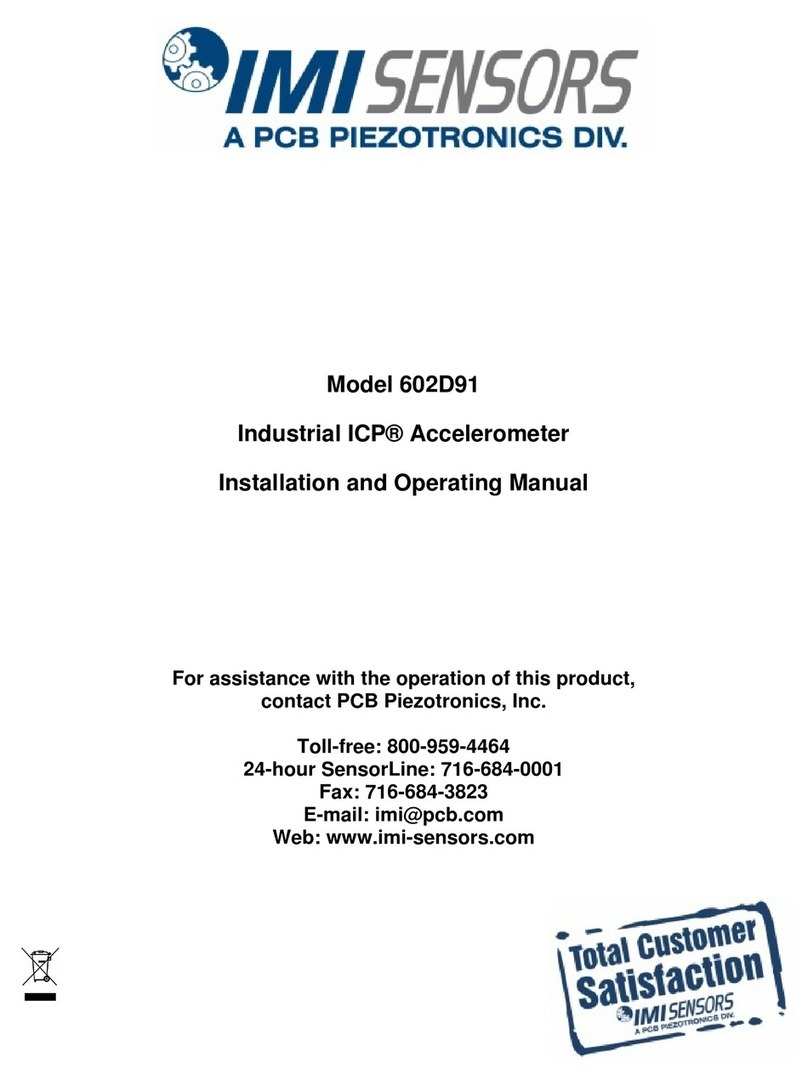
PCB Piezotronics
PCB Piezotronics IMI SENSORS 602D91 Installation and operating manual
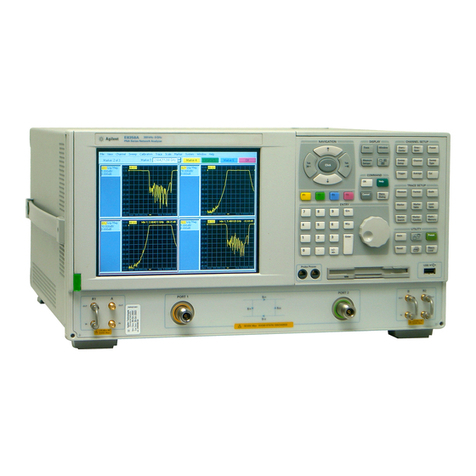
Agilent Technologies
Agilent Technologies E8356A Installation note
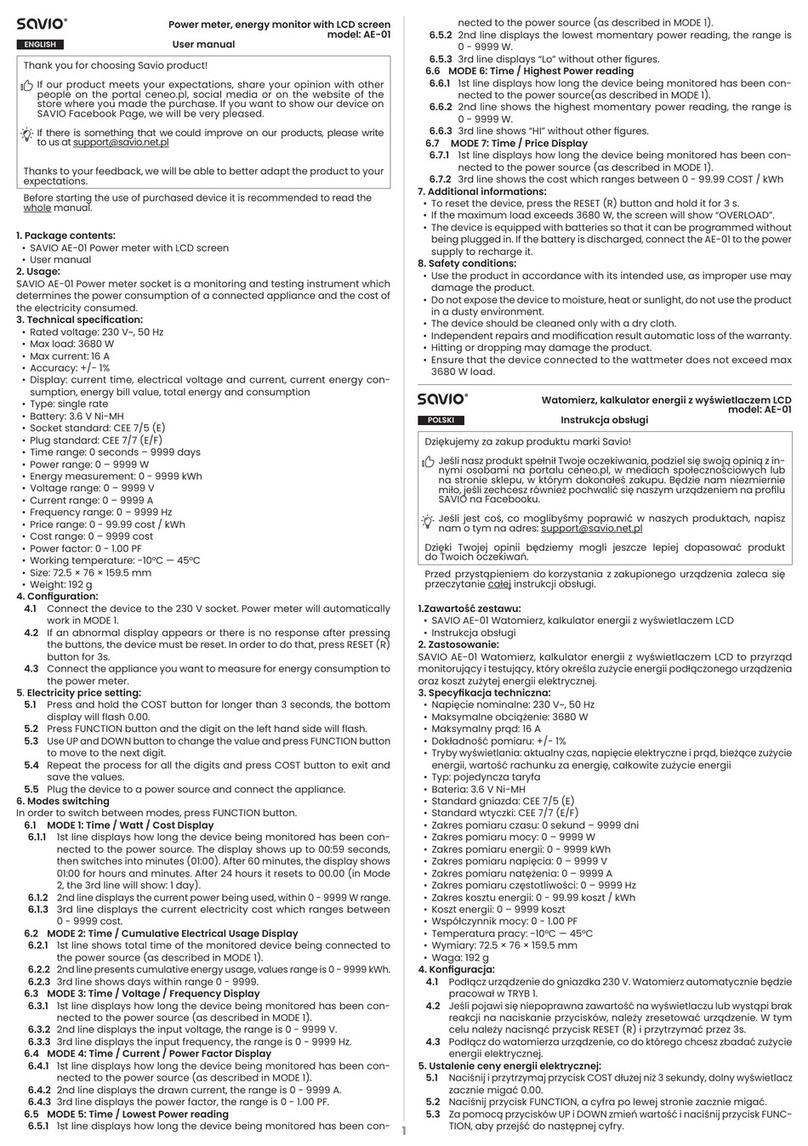
Savio
Savio AE-01 user manual

Endress+Hauser
Endress+Hauser Micropilot S FMR540 quick start guide
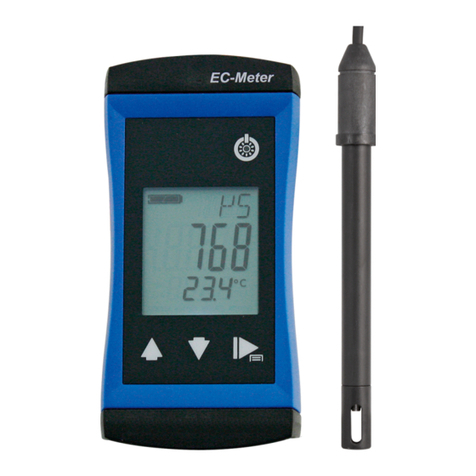
GHM
GHM G 1410 operating manual
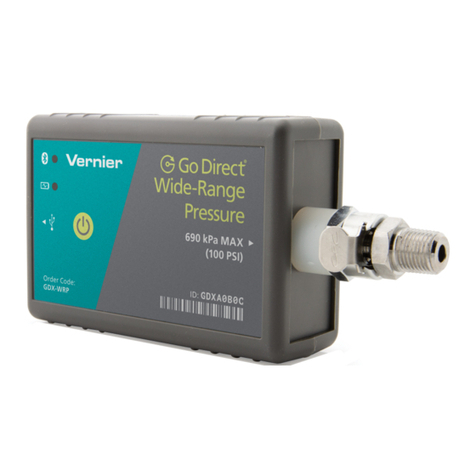
Vernier
Vernier Go Direct GDX-WRP quick start guide
